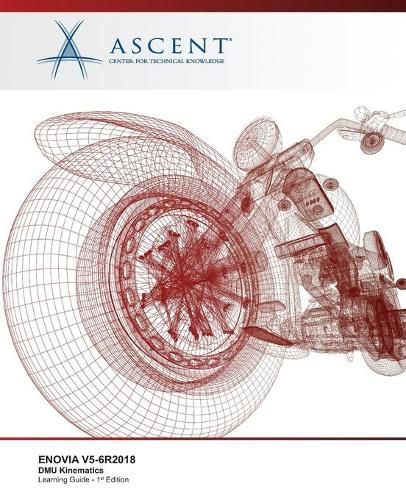Readings Newsletter
Become a Readings Member to make your shopping experience even easier.
Sign in or sign up for free!
You’re not far away from qualifying for FREE standard shipping within Australia
You’ve qualified for FREE standard shipping within Australia
The cart is loading…






The ENOVIA V5-6R2018: DMU Kinematics learning guide focuses on how to create and simulate V5 mechanisms using CATIA products. The course begins with an overview of the mechanism design process and then each step in the process is discussed in depth using lectures and hands-on practices. This course also introduces the concept of converting assembly constraints into kinematic joints. Additionally, this learning guide provides an introduction to converting V4 mechanisms to V5 as well as the 3D model method of creating kinematic assemblies.
Topics Covered
Kinematic analysis process Constraint-based joints Curve/surface-based joints Ratio-based joints Compiling and replaying a simulation Swept volumes Traces Sensors Clash detection Assembly constraint conversion CATIA V4 mechanisms Simulation with laws
Prerequisites
Access to the V5-6R2018 version of the software, to ensure compatibility with this guide. Future software updates that are released by Dassault Systemes may include changes that are not reflected in this guide. The practices and files included with this guide might not be compatible with prior versions (i.e., V5-6R2017). Completion of at least one of the following courses (or equivalent experience) is highly recommended: - ENOVIA V5-6R2018: DMU Navigator and Space Analysis
CATIA V5-6R2018: Introduction to Modeling
CATIA V5-6R2018: Introduction for Non-Designers
$9.00 standard shipping within Australia
FREE standard shipping within Australia for orders over $100.00
Express & International shipping calculated at checkout
The ENOVIA V5-6R2018: DMU Kinematics learning guide focuses on how to create and simulate V5 mechanisms using CATIA products. The course begins with an overview of the mechanism design process and then each step in the process is discussed in depth using lectures and hands-on practices. This course also introduces the concept of converting assembly constraints into kinematic joints. Additionally, this learning guide provides an introduction to converting V4 mechanisms to V5 as well as the 3D model method of creating kinematic assemblies.
Topics Covered
Kinematic analysis process Constraint-based joints Curve/surface-based joints Ratio-based joints Compiling and replaying a simulation Swept volumes Traces Sensors Clash detection Assembly constraint conversion CATIA V4 mechanisms Simulation with laws
Prerequisites
Access to the V5-6R2018 version of the software, to ensure compatibility with this guide. Future software updates that are released by Dassault Systemes may include changes that are not reflected in this guide. The practices and files included with this guide might not be compatible with prior versions (i.e., V5-6R2017). Completion of at least one of the following courses (or equivalent experience) is highly recommended: - ENOVIA V5-6R2018: DMU Navigator and Space Analysis
CATIA V5-6R2018: Introduction to Modeling
CATIA V5-6R2018: Introduction for Non-Designers